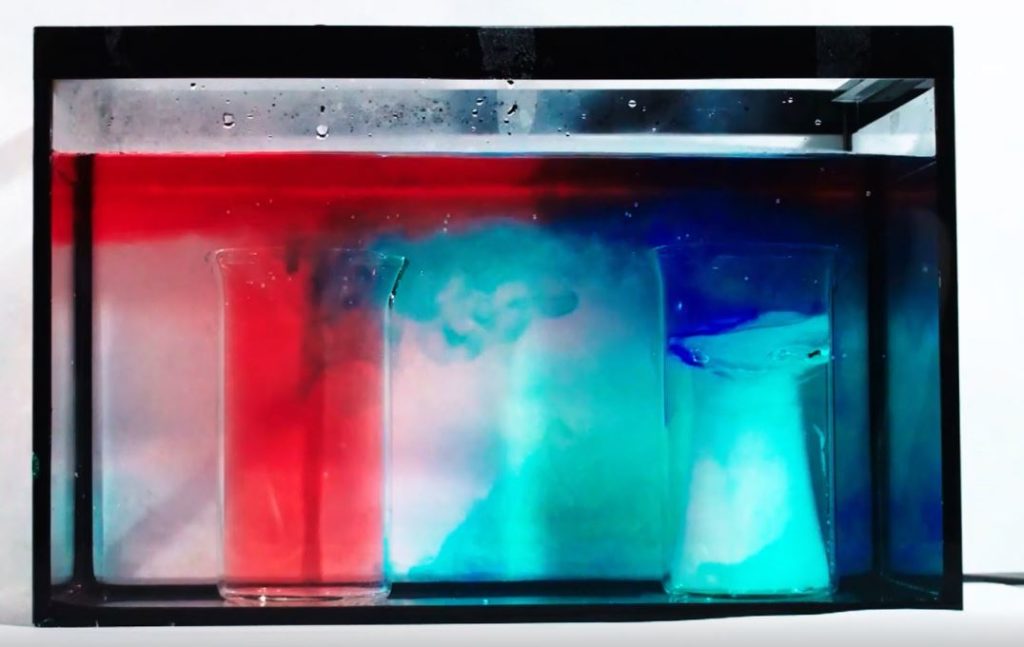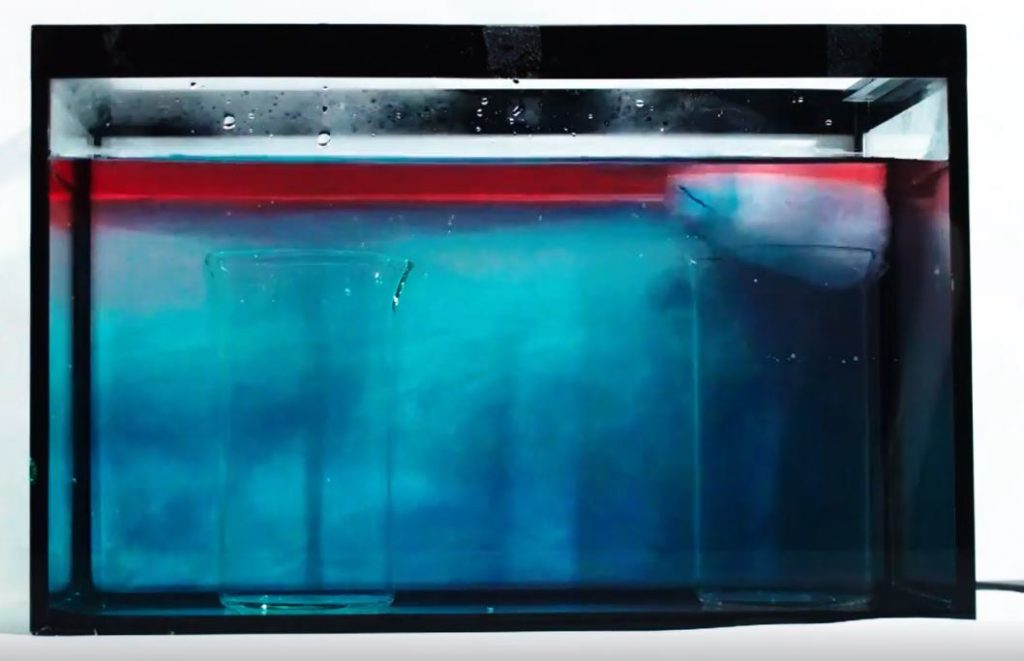Experience in the Laboratory
BEHAVIOUR OF COLD AND WARM WATER CURRENTS
In a still pond, with no wind or anything disturbing it, we will observe water movement caused by parts of the water being at a different temperature.
A container with ice and blue pigment (cold source) and another with warm water and red pigment (heat source) are put into a fish tank filled with water at an ambient temperature.
The pigments help us to observe the movement of cold water (blue) and warm water (red).
We can observe, thanks to the pigments, the movement of the cold water (blue) as it pushes the hot water (red) upwards.

Over time, the warm water (red) remains on the surface and the cold water (blue) drops to the bottom.

Finally, when the water temperature is the same throughout the fish tank, there are no more currents and the water stops moving.

